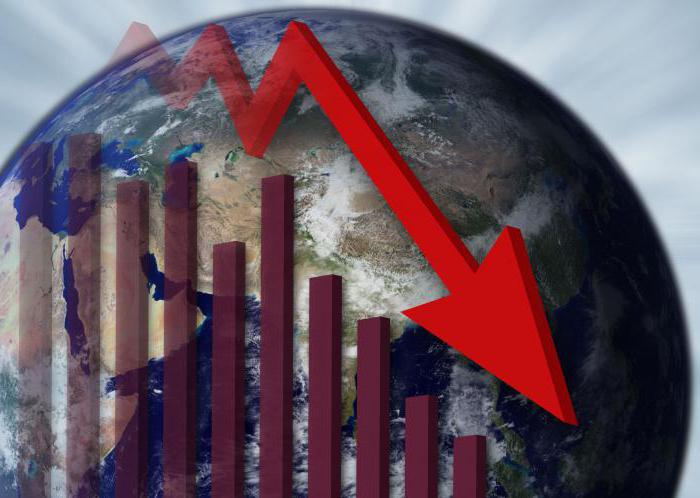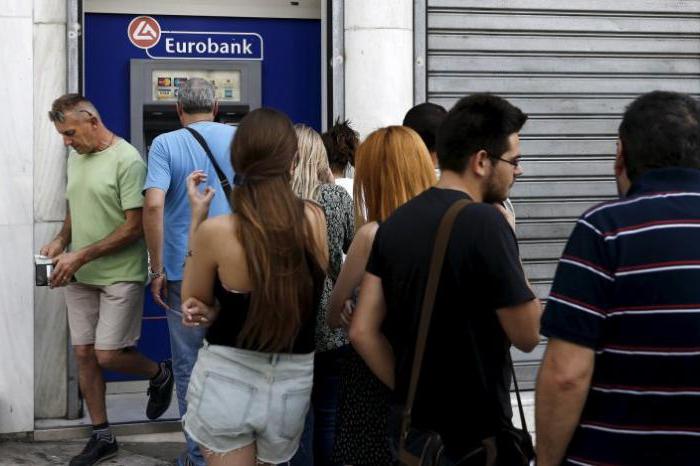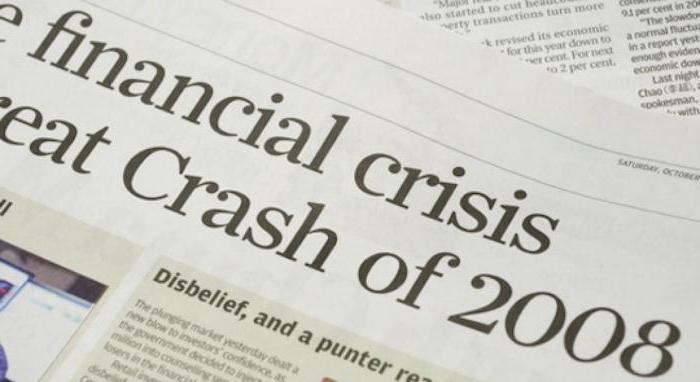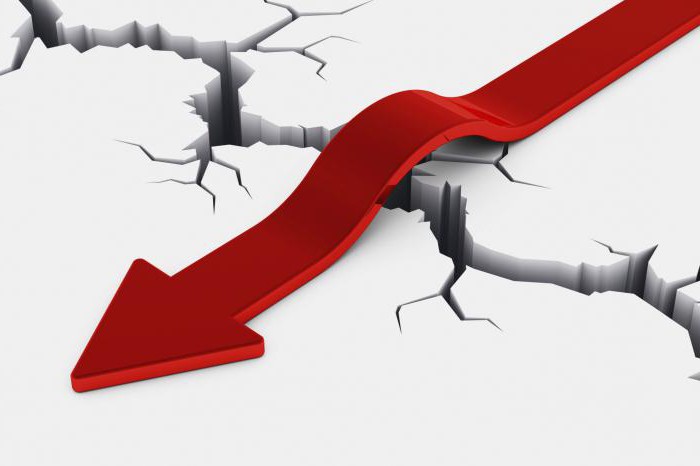The crisis of 2008 is not just a phenomenon. This event has led to the most global decline in global economic performance over the past few decades. Its consequences have become so widespread that they are still felt throughout the world. This is a serious topic, so you should delve into its study.

Background
The crisis of 2008, like any other significant phenomenon, had certain causes and sources. Experts identify several significant prerequisites that provoked the collapse of the global financial system.
The general cyclical nature of economic development played a role in this. Fluctuations are normal. But economic downturns are usually followed by booms. Therefore, the cycles are periodic. But the crisis of 2008 led to a rapid decline in the economy. It is compared in scale with the Great Depression of the 1930s. World trade fell by a record ten percent! Recovery began to be observed only in 2011. And so far, world trade lags far behind pre-crisis growth rates.
Prerequisites also include imbalances in capital flows and international trade. And the overheating of the credit market, at which the pace of economic growth becomes uncontrollable, absorb public and private resources, which ultimately ends in a recession. But in 2008, it ended with a mortgage crisis. It was the result of a credit expansion that took place between 1980 and 2000.
Origins: USA
Everyone knows that the global economic downturn has begun the 2008 US mortgage crisis. There was a rapid bankruptcy of the vast majority of financial institutions and a fall in stock prices. It is worth noting that the prerequisites for this mortgage crisis were traced back to 2006, when a decrease in the number of houses sold was recorded. And in the spring of 2007, the situation swallowed high-risk mortgages. As a result, this crisis escalated into a financial one, and began to draw not only the United States into itself.
The global nature of the situation can be felt by referring to the calculations made by specialists of the Washington Institute of International Finance. For the whole of 2007 and the first half of the next, banks of various states wrote off about $ 390 billion due to their losses! And most of these funds came in Europe.
The financial crisis of 2008 reduced the value of US corporations by 40%. The fall in European markets exceeded 50%. As for Russia, the value of our stock indices was less than ¼ of the level that prevailed before the crisis.

Government explanation
In early 2011, US authorities released a final report, which was then ordered by then acting President Barack Hussein Obama. A preliminary thorough investigation of the causes of the crisis was conducted. Which, in fact, were published in the report.
The US government believed that the 2008 crisis triggered the failures observed in financial regulation, as well as violations in corporate governance. They led to excessive risks.
The too high debt of households played a role, and the growth of the so-called “shadow” banking system, which was not regulated by anyone. In addition, the widespread prevalence of derivatives was attributed to the assumptions. These stock exchange contracts in the mid-zero were very popular, but very "exotic" securities.
How the phenomenon spread
The financial crisis of 2008 instantly swallowed up the developed countries of the world. In the period that reigned before this date, world trade was growing steadily. The average pace was about 8.74%.But as soon as the volume of bank lending sharply curtailed, and the demand for services and goods not only fell, but collapsed - indicators fell to 2.95%. After which, a year later, an additional drop of another 11.89% was recorded.
All this led to the fact that on 08.10.2008 all the leading central banks of the world came to an unprecedented decision - to lower their interest rates. The only exceptions were Russia and Japan. This step was regarded as the final recognition of the collapse of the economy.
Two days later, a meeting of finance ministers and central bankers of Japan, France, the United States, Canada, Italy, Germany and the United Kingdom was held in Washington. During their meeting, an anti-crisis plan was approved. It was decided to take “exceptional and urgent action”. Moreover, the plan included the use of any available funds to support systemically important financial institutions.
Then, on November 14, 2008, the G20 leaders organized an anti-crisis summit. During this meeting, a declaration was adopted that contained general principles for the reorganization of financial institutions of world significance and markets in general.
Three weeks later, the Bank of England and the ECB significantly reduced interest rates, as the threat of deflation was brewing more rapidly. And soon the bad news came. It turned out that Eurozone GDP for the second and third quarter of 2008 decreased by 0.4%. This meant that for the first time in 15 years, a recession overtook the European economy.

What happened in Russia?
The crisis of 2008 could not affect the economy of our country. Although initially, according to a World Bank report, in Russia it initially affected only the private sector.
An alarming signal that year was a downward trend in stock markets, observed in May, which ended in a collapse of quotations in July. The Russian “feature” then became a huge external corporate debt, and very insignificant - state debt.
In the fall, the global economic crisis of 2008 began to absorb our country. The MICEX and RTS stock indices collapsed, export prices began to decline, industrial production began to fall. And, of course, there were some job cuts. In October, GDP fell by 0.4%. This indicated the beginning of a recession.
First of all, the state was engaged in the repayment of external debt and the recapitalization of major banks. To support the financial system, funds had to be spent in excess of 3% of GDP. If you believe the data of the World Bank, then these measures have paid off. The banking system has been stabilized, despite the conditions of extreme liquidity shortages. Large institutions escaped bankruptcy, foreign currency deposits began to grow, and the consolidation process resumed.
However, attempts to prevent the depreciation of the ruble were unsuccessful. About ¼ of the country's gold and foreign exchange fund was lost. Therefore, in November of that year, the implementation of the so-called “soft devaluation” began, which, according to some opinions, forced many companies to curtail their production and withdraw working capital to the foreign exchange market.

Greece
The crisis of 2008 in Russia greatly shook the economy. But our country, fortunately, has not suffered as much as Greece.
The fact is that the government of this country borrowed an astronomical amount that would cover the budget deficit. The debt became dangerously large by 2010, and after the publication of information on the macroeconomics of Greece, the situation became deplorable at all. The amount was so great that the Karamanlis government even suppressed its size.
By 2011, it turned out that Greece's external public debt was 240 billion euros. This amount exceeds 140% of the state’s GDP. Globalization can be realized if we take into account the fact that in 2009 Greece borrowed only 80 billion. As a result, the country's deficit amounted to 12.7% of GDP. Despite the fact that in Europe only 3% is allowed.
Due to the fact that the government could not pay the debt, public sector spending was cut.This led to demonstrations, protests and riots. The causes of the 2008 crisis played a major role in this. The saddest thing is that the situation has not improved so far. In 2015, Greece plunged into default, becoming the most debt-ridden country.

Republic of Belarus
The economic situation of this state was not immediately affected by all the previously listed reasons. The consequences of the 2008 crisis also appeared with some delay. All due to the underdevelopment of financial and stock markets.
However, there was a decline. Mainly due to a decrease in production volumes in the states with which Belarus partnered. The consequence of this recession was a decreased demand for individual export goods. They, in the case of Belarus, were ferrous metals, engineering products, petroleum products, and potash fertilizers.
But the situation escalated especially in 2011. The Belarusian ruble fell 75%, depreciating at a record speed. At the same time, the formal course was maintained, while the real, “black” one, exceeded it twice. But in the end, the devaluation was recognized.
The situation in Ukraine
The global financial crisis of 2008 engulfed this state. An extremely difficult situation reigned in Ukraine at that time. After all, the government at the very beginning of the crisis took a large loan from the International Monetary Fund. Its amount amounted to 16.5 billion dollars. Huge capital, given that Ukraine’s reserve was only 32 billion. And a loan, by the way, was taken in order to pay debts to Western lenders.
Naturally, the consequences of the 2008 crisis in Ukraine were global. In October alone, industrial production fell by almost 20%. And GDP by November fell by 16.1%. The fall of the currency also occurred. The price of one dollar jumped from 4.6 hryvnia to 10.
Not surprisingly, on December 19, the National Bank of Ukraine announced an internal default. Prior to this, the NBU established a ban on early withdrawal of funds from deposits. Because of what, the hryvnia deposits of citizens depreciated. And the rates on previously issued loans increased one and a half times. According to statistics, the debt of individuals on foreign currency loans increased from 130 billion to 191.7 billion! And this is without taking into account the increase in rates, but only because of the fall of the hryvnia.
There was also a deficit in the foreign trade balance. This meant that imports exceeded exports. In 10 months, the deficit reached $ 17 billion. To cover it, I had to use borrowed funds.
At the end of 2009 it was announced that the global crisis of 2008 caused a drop in Ukrainian GDP by 14.8%. And this indicator has become one of the worst in history in the whole world. The situation was more serious only in Estonia and Botswana (with the exception of the notorious Greece).

What happened in China?
Before the crisis in China, things were going very well. 2007 was the fifth consecutive year for which GDP grew by more than 10%. Then, the growth rate of the state economy reached amazing results. He exceeded all indicators in the past 13 years, reaching 11.4%.
But the US economy began to enter a recession. And the growth rate of China's economy began to slowly but surely decline. This was influenced by the sharp increase in the number of defaults in the United States on mortgages in August - this is where it all began.
China's foreign exchange reserve in the fall of 2008 amounted to $ 2 trillion, but over the past three months of 2008, it has decreased to 1.9 trillion. Also, the Chinese authorities decided to invest 586 billion in updating the infrastructure, and also in the development of agriculture. The indicated amount was equal to 18% of GDP. One billion less was spent on implementing a package of anti-crisis measures.
Also, in late autumn 2008, a sharp increase in the number of unemployed was recorded. The situation was so critical that factories that released goods for export closed. In this connection, the government decided to reorient the economy to domestic demand.
The most difficult for the PRC was precisely November 2008. It must be said that the government acted very competently.Six months later, in March 2009, the country returned to the pre-crisis level of production. Even more - the country managed to get ¼ more profit than in the same period of the past, 2008.
Social impact
Naturally, an event of such a global scale could not but affect society. The main negative point was the rapid increase in unemployment. Which continues to this day. In Europe and the USA, the unemployment rate exceeds 10% (although the permissible level is only 4%). In Russia, according to the results of the crisis, this indicator amounted to more than 11%. Now, as of September 2016, the official unemployment rate has dropped to 5.2%.
But the worst part of the crisis is the increase in suicides. Financial difficulties have caused suicides around the world. They were often accompanied by the killing of loved ones and relatives. So, for example, on 08/21/2008, a broke broker in Mumbai strangled his pregnant wife, and then hanged himself. Big businessmen voluntarily passed away one after another - Kartik Rajaram shot himself, killing five members of his family, Kristen Schnor hanged himself, Adolf Merkle threw himself under a train, Stephen Goode shot himself in the head, like Vladimir Zubkov, James MacDonald and many others who could not cope with the crisis. In Russia, by the way, the frequency of suicides has increased from 14 to 29 per 100,000 of the population.

Continuation
Unfortunately, the 2008 economic crisis did not end. Of course, the situation in the world has stabilized somewhat, but most countries are still in recession. Since 2015, the previous instability of economic growth has been observed, as well as the emergence of ever new geopolitical risks caused by well-known conflicts.
Recovery continues, but it is so uneven that the vast majority of people do not feel it. A year ago, Christine Lagarde, IMF's distribution director, said the global economy is still suffering from the effects of what happened in 2008. And one cannot say with certainty how long this will last. And the New York Times a few months later published material in which it was said that the central banks of developed countries still can not overcome the effects of the crisis.
The economy is growing extremely slowly, investments are carried out with minimal activity, inflation is almost not recorded. And this is not even looking at the low rates of the Central Bank. The incident greatly shocked people, so it is not surprising that business and consumers behave as if hard times will never pass.
It is worth mentioning that in recent years, the important role of the Chinese economy has been noted. Not surprising, because it accounts for about 1/3 of global financial growth. If you believe the data of the Organization for Economic Cooperation and Development, then at the moment the situation in China is better than in the United States. That's not bad. The main thing is that China does not have a recession. Because such an incident will become a major risk factor for the global economy. And it is not known how it might end with the 2008 replay.